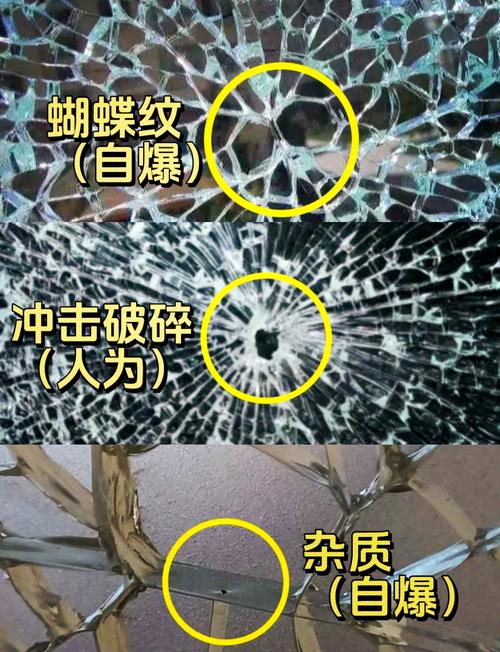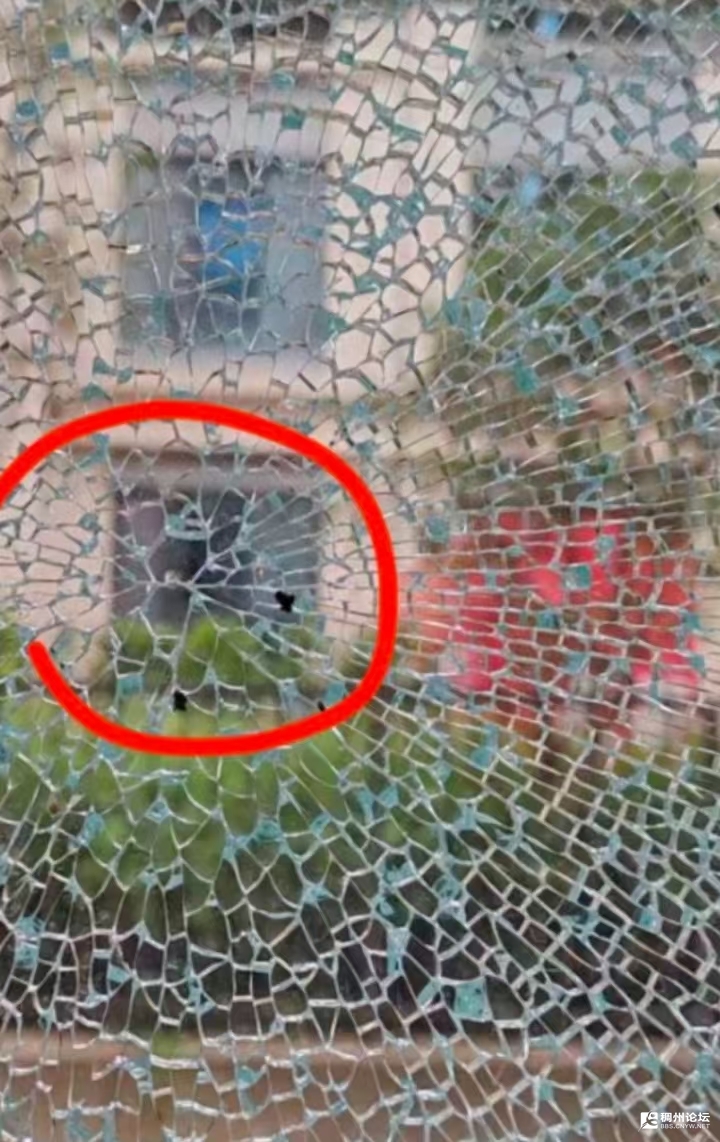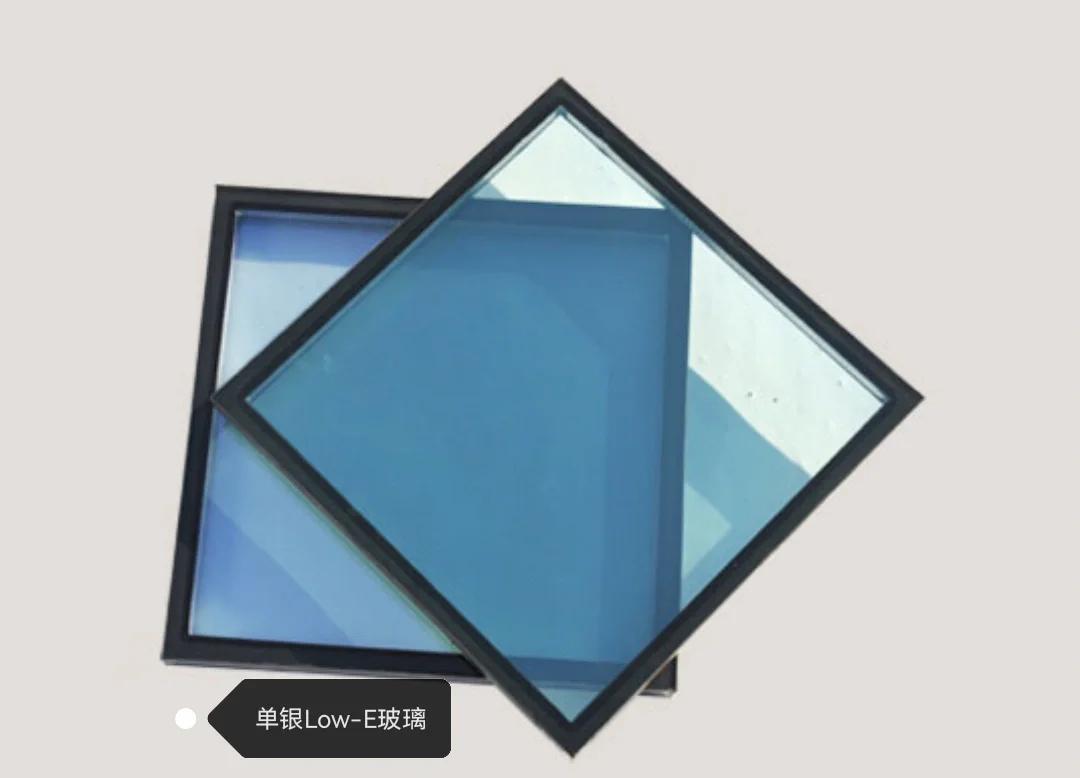

Analysis of the causes of tempered glass self-explosion and preventive measures
Analysis of the causes of tempered glass self-explosion and preventive measures
1. What is tempered glass "self-explosion" and classification of self-explosion:
1. What is tempered glass "self-explosion"? Since the birth of tempered glass, it has been accompanied by the problem of self-explosion. Tempered glass self-explosion can be described as the phenomenon that tempered glass automatically breaks without direct mechanical external force. Self-explosion is one of the inherent characteristics of tempered glass. Tempered glass self-explosion can occur during tempering processing, storage, transportation, installation, and use.
2. Classification of tempered glass self-explosion: Self-explosion can be divided into two types according to different causes:
One is self-explosion caused by visible defects in the glass, such as stones, sand particles, bubbles, inclusions, gaps, scratches, burst edges, etc.; the other is tempered glass self-explosion caused by nickel sulfide (NIS) impurities and heterogeneous phase particles in the glass.
These are two different types of self-explosion, which should be clearly classified, treated differently, and handled and handled in different ways. The former is generally visible to the eye and relatively easy to detect, so it is controllable in production. The latter is mainly caused by the volume expansion of tiny nickel sulfide particles in the glass, which cannot be visually inspected and is therefore uncontrollable. In actual operation and processing, the former can generally be removed before installation, while the latter continues to exist because it cannot be inspected, becoming the main factor in the self-explosion of tempered glass in use. Nickel sulfide is difficult to replace after self-explosion, and the processing cost is high. At the same time, it will be accompanied by large quality complaints and economic losses, causing dissatisfaction among owners and even more serious other consequences. Therefore, the self-explosion caused by nickel sulfide is the focus of our discussion.
2. Characteristics of uncontrollable tempered glass self-explosion
The problem of tempered glass self-explosion without clear reasons is difficult to clarify. There is no certainty about the time of self-explosion. It may be just out of the furnace, or it may be 1 to 2 months after leaving the factory. There are also cases where it explodes 1 to 2 years after leaving the factory. The time that causes more self-explosion of tempered glass may be 4 to 5 years after the product is completed. According to incomplete understanding, the probability of self-explosion of most manufacturers' products is about 3‰; the probability of individual manufacturers' products may be even higher. The fundamental reason for the self-explosion of tempered glass is that the glass contains nickel sulfide and heterogeneous phase particle impurities. How are the impurities mixed in? It has not been fundamentally found out how nickel is mixed in the glass. The most likely source is the various nickel-containing alloy parts used in the equipment and the various heat-resistant alloys used in the kiln. For oil-burning melting furnaces, it has been reported that nickel-rich condensates were found in small furnaces. Sulfur undoubtedly comes from the sulfur-containing components in the batch and fuel. When the temperature exceeds 1000℃, nickel sulfide exists in the molten glass in the form of droplets, and the solidification temperature of these small droplets is 797℃. 1 gram of nickel sulfide can generate about 1,000 small stones with a diameter of 0.15mm. Nickel sulfide can occur at any time after production is completed, so it cannot be completely eliminated now. There is no effective prevention method so far, which is called "cancer of glass curtain walls". Because nickel sulfide is difficult to replace after self-explosion, the processing cost is high, and it will be accompanied by large quality complaints and economic losses, causing dissatisfaction of owners and even more serious other consequences. It is called "cancer of glass curtain walls."
3. Tempered glass self-explosion rate and reasons for self-explosion
1. Tempered glass self-explosion rate: The self-explosion rates of various manufacturers at home and abroad are not consistent, ranging from 3% to 0.3%. Generally, the self-explosion rate is calculated by the number of pieces, without considering the area and thickness of a single piece of glass, so it is not accurate enough and cannot be compared more scientifically. In order to uniformly measure the self-explosion rate, a unified assumption must be determined. The unified conditions are set: every 5 to 8 tons of glass contains a nickel sulfide that is sufficient to cause self-explosion; the average area of each piece of tempered glass is 1.8mm; the nickel sulfide is evenly distributed. The calculated self-explosion rate of 6mm thick tempered glass is 0.64% to 0.54%, that is, the self-explosion rate of 6mm tempered glass is about 3‰ to 5‰. This is basically consistent with the actual values of domestic high-level processing enterprises. Even if it is produced completely according to the standard, the self-explosion of tempered glass cannot be completely avoided. Large buildings easily use hundreds of tons of glass, which means that the presence of nickel sulfide and heterogeneous impurities in the glass is very high, so even if the tempered glass is heat-dipped, self-explosion is still inevitable.
4. The reason for the uncontrollable self-explosion of tempered glass-nickel sulfide (NiS) and heterogeneous particles
The source of uncontrollable self-explosion of tempered glass is not only the traditional NiS particles, but also many other heterogeneous particles. The initiation and expansion of cracks in glass are mainly caused by the residual stress generated near the particles. This type of stress can be divided into two categories, one is the phase change stress during the phase change expansion process, and the other is the residual stress generated by the mismatch of thermal expansion coefficients. Nickel sulfide (NiS) and heterogeneous particles. The glass contains nickel sulfide impurities in the form of small crystals. Under normal circumstances, it will not cause glass breakage. However, due to the reheating of tempered glass, the phase state of nickel sulfide impurities has changed. The high-temperature α state of nickel sulfide is frozen when the glass is quenched. It may take years for them to return to the β state. Since the low-temperature β-state nickel sulfide impurities will increase in volume, local stress concentration will occur inside the glass, and then the tempered glass will explode. However, only relatively large impurities will cause self-explosion, and tempered glass self-explosion can only occur when the impurities are in the core of the tensile stress. Nis is a crystal with two crystal phases: high-temperature phase α-nis and low-temperature phase β-nis. The phase transition temperature is 379℃. When the glass is heated in the tempering furnace, because the heating temperature is much higher than the phase transition temperature, all Nis will transform into α phase. However, in the subsequent quenching process, α-nis does not have time to transform into β-nis, and is thus frozen in the tempered glass. At room temperature, α-nis is unstable and tends to gradually transform into β-nis. This transformation is accompanied by a volume expansion of about 2-4%, which causes the glass to bear huge phase change tensile stress, thus causing self-explosion. From the scanning electron microscope photos of the nis stones extracted from the glass fragments after the self-explosion, it can be seen that its surface is uneven and very rough. Heterogeneous phase particles cause tempered glass to self-explode. The cross-sectional photos of the glass fragments at the source of the rupture can show the boundary area between the first crack trace caused by a spherical tiny particle and the secondary fragmentation.
5. How to identify the self-explosion of tempered glass
First, check whether the detonation point (cracks in tempered glass are radial and have a starting point) is in the middle of the glass. If it is at the edge of the glass, it is generally because the glass has not been chamfered or the edge of the glass is damaged, causing stress concentration and cracks to gradually develop; if the detonation point is in the middle of the glass, check whether there are two small polygons at the detonation point that resemble two butterfly wings (butterfly spots). If you carefully observe the common edge of the two small polygons (the trunk of the butterfly), there should be small black particles (nickel sulfide stones) visible to the naked eye, then it can be judged that it is self-explosion; otherwise, it should be damaged by external forces. The typical feature of glass self-explosion is butterfly spots. The glass fragments are distributed radially, and there are two glass blocks shaped like butterfly wings in the center of the radiation, commonly known as "butterfly spots". Nis stones are located on the interface of the two "butterfly spots".


VI. Countermeasures to Solve Tempered Glass Self-explosion - Homogenization Treatment
The main countermeasures to solve tempered glass self-explosion are controlling tempering stress, homogenization treatment (HST), etc. Among them, homogenization treatment of glass is the most effective and fundamental method. The effectiveness of homogenization treatment depends on the performance of the homogenization furnace and the homogenization process. It is necessary to pay attention to the placement of glass in the furnace, the homogenization temperature system, the direction of air flow in the furnace, and other matters that need attention. Homogenization treatment is recognized as an effective way to completely solve the problem of self-explosion. The tempered glass is heated again to about 290oC and kept warm for a certain period of time, so that nickel sulfide completes the crystal phase transformation before the glass leaves the factory, so that the glass that may self-explode in the future will be broken in advance in the factory. This method of heat treatment after tempering is called "Heat Soak Test" abroad, abbreviated as HST. In my country, it is usually translated as "homogenization treatment", also commonly known as "detonation treatment". In principle, homogenization treatment seems to be very simple, and many manufacturers do not pay attention to it, thinking that they can choose to purchase or even make their own homogenization furnace at will. In fact, this is not the case. Nickel sulfide inclusions in glass are often non-stoichiometric compounds, containing other elements in varying proportions, and their phase change rate is highly dependent on the temperature system. Research results show that the phase change rate at 280oC is 100 times that at 250oC, so it is necessary to ensure that each piece of glass in the furnace experiences the same temperature system. Otherwise, on the one hand, some glass temperatures are too high, which will cause the reverse phase change of nickel sulfide; on the other hand, the glass with low temperature will not be fully phase-changed due to insufficient insulation time. Both situations will lead to ineffective homogenization.
Experiments have shown that the phase change of nickel sulfide is one of the main reasons for the self-explosion of tempered glass. Then the way to solve this problem is to carry out homogenization scientifically and effectively. Another way is to avoid strong stress to impact the surface of tempered glass in normal applications, and to pay attention to the uniform force, etc., which can also effectively avoid the occurrence of tempered glass self-explosion.
VII. The use of fully tempered glass for glass curtain walls is worth discussing
1. Tempered glass self-explosion is an important problem that urgently needs to be solved for the safety of glass curtain walls. However, the traditional concept of safety glass is that (full) tempered glass belongs to safety glass. In addition to its high strength, the main reason is that when (full) tempered glass is broken, the entire piece of glass will be broken into small honeycomb-shaped obtuse particles, which are not easy to hurt people. Through this investigation and many accident practices, this concept has been questioned. It is necessary to discuss the use of safety glass in high-rise building glass curtain walls. For the use of safety glass in high-rise building glass curtain walls, the main concern for safety is that the glass will break and fall and hurt people. There should be three requirements here:
First, the glass has sufficient strength to withstand the design load without damage.
Second, if the glass breaks, it must be shatter-proof and scattered, so that it will not fall and scatter when it is in a broken state.
Third, it has sufficient fracture toughness k1c.
2. (Full) tempered glass has two safety factors: high strength and its broken form is small obtuse particles. However, it does not have the key safety factor of anti-shattering and scattering for high-rise building glass curtain walls, and the unsafe consequences brought about by this are that after the (full) tempered glass is broken, a large group of blunt-angled fragments are scattered from high altitude. Even if the particles are small, the speed is very high and can also hurt people. The culprit is the gravity acceleration of free fall. For the glass curtain walls of high-rise buildings, no matter what form the glass fragments are, if they are scattered from high-rise buildings, they are dangerous or even fatal. In addition, (full) tempered glass explodes and destroys without warning, and there is currently no effective way to completely prevent it. It is the cancer of glass curtain walls. Glass explodes and shatters and scatters from high altitudes. It is not safe to use (full) tempered glass for high-rise building glass curtain walls. Safety is a relative concept and is conditional; it is not absolute and unconditional. It is not comprehensive to define the safety glass of glass curtain wall only from the shape of its fragments without using the conditions. Tempered glass is not unbreakable, but the glass fragments are small, but the fragments are easy to fall and splash and cause accidents. Therefore, in many foreign glass curtain wall technical standards and specifications, it is clear that single-piece tempered glass should not be used for glass curtain wall, and anti-scattering glass should be used, including glass with safety film or laminated glass made of two pieces of glass with PVB interlayer. For example, Japanese high-rise building glass curtain wall uses (full) tempered glass, and a layer of safety film must be added to ensure safety. "Strong but not broken, broken but not scattered", anti-scattering glass is the safety glass used in glass curtain wall.
3. It is recommended to use semi-tempered glass. The production of semi-tempered glass adopts a process similar to that of tempered glass. It is just that the cooling speed is slower. Therefore, its surface stress is slightly less than that of tempered glass. Semi-tempered glass is obviously superior to ordinary annealed glass in mechanical strength, wind pressure resistance, impact resistance and thermal shock resistance, and is more suitable for use in glass curtain wall. Characteristics of semi-tempered glass: The strength is twice that of ordinary glass; it can effectively resist thermal stress. It can avoid the thermal cracking of glass. Once it breaks, the cracks of semi-tempered glass extend to the edge. Its fragments can be retained in the frame without falling; it is not easy to self-explode like tempered glass; it has better flatness than tempered glass.
VIII. Conclusion
In addition to being broken by external force, the most important phenomenon of tempered glass explosion is the self-explosion of tempered glass.
1. The self-explosion of tempered glass is an inherent characteristic of tempered glass.
2. The source of self-explosion of tempered glass is not only NiS particles in traditional knowledge, but also many other heterogeneous phase particles.
3. The self-explosion of tempered glass is uncontrollable and there is no sign beforehand. It is called "cancer of glass curtain wall".
4. The solution to the self-explosion of tempered glass is to homogenize the glass after tempering, so as to detonate the tempered glass that may explode in the homogenizing furnace.
5. Curtain walls, doors and windows should use anti-scattering glass, such as glass film or laminated glass. Semi-tempered glass is recommended for single-piece glass.







